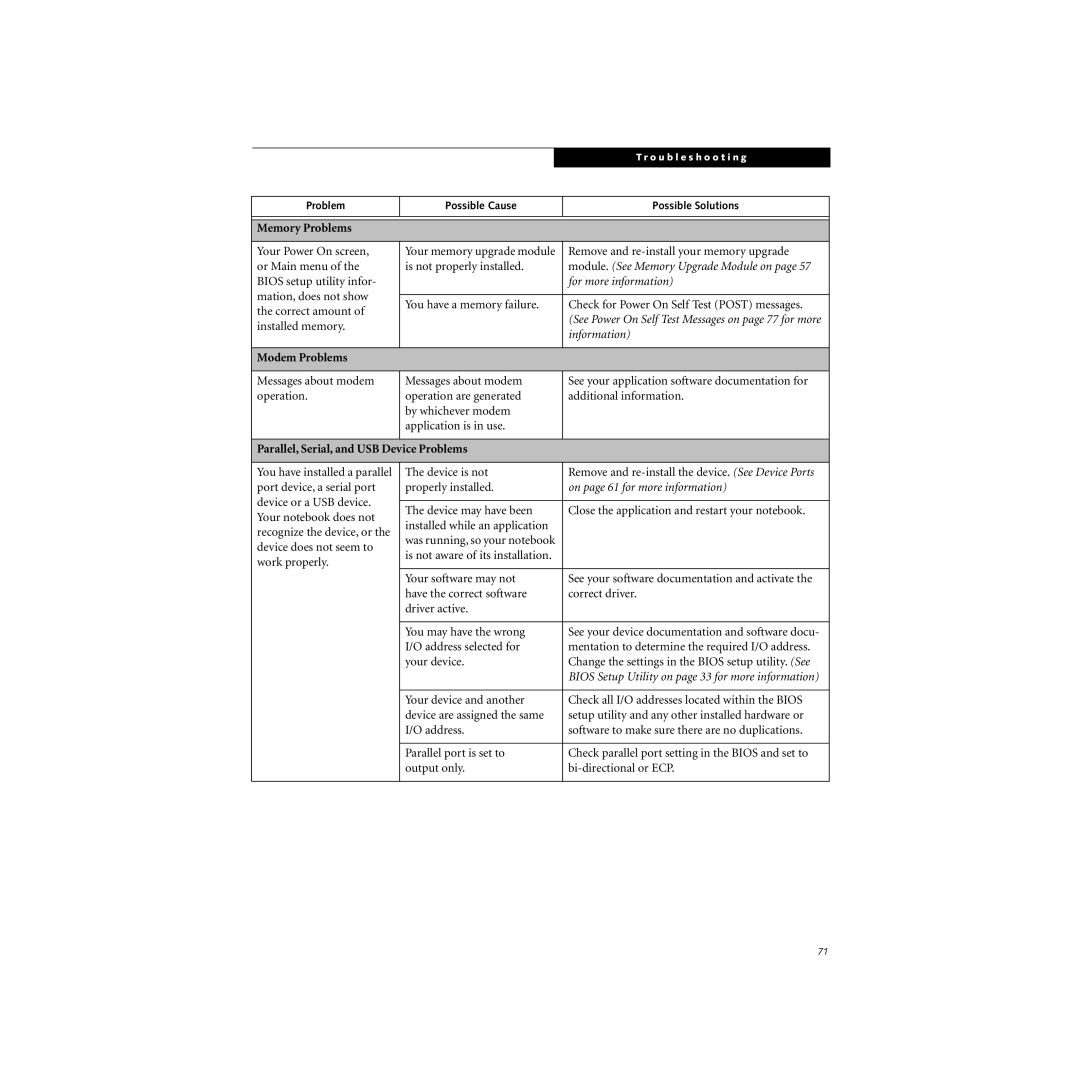|
|
| T r o u b l e s h o o t i n g | |
|
|
|
| |
|
|
| ||
Problem | Possible Cause | Possible Solutions | ||
|
|
|
| |
|
|
|
| |
Memory Problems |
|
|
| |
|
|
| ||
Your Power On screen, | Your memory upgrade module | Remove and | ||
or Main menu of the | is not properly installed. | module. (See Memory Upgrade Module on page 57 | ||
BIOS setup utility infor- |
|
| for more information) | |
mation, does not show |
|
|
| |
You have a memory failure. | Check for Power On Self Test (POST) messages. | |||
the correct amount of | ||||
|
| (See Power On Self Test Messages on page 77 for more | ||
installed memory. |
|
| ||
|
| information) | ||
|
|
| ||
|
|
|
| |
Modem Problems |
|
|
| |
|
|
| ||
Messages about modem | Messages about modem | See your application software documentation for | ||
operation. | operation are generated | additional information. | ||
| by whichever modem |
| ||
| application is in use. |
| ||
|
|
| ||
Parallel, Serial, and USB Device Problems |
| |||
|
|
| ||
You have installed a parallel | The device is not | Remove and | ||
port device, a serial port | properly installed. | on page 61 for more information) | ||
device or a USB device. |
|
|
| |
The device may have been | Close the application and restart your notebook. | |||
Your notebook does not | ||||
installed while an application |
| |||
recognize the device, or the |
| |||
was running, so your notebook |
| |||
device does not seem to |
| |||
is not aware of its installation. |
| |||
work properly. |
| |||
|
|
| ||
| Your software may not | See your software documentation and activate the | ||
| have the correct software | correct driver. | ||
| driver active. |
| ||
|
|
| ||
| You may have the wrong | See your device documentation and software docu- | ||
| I/O address selected for | mentation to determine the required I/O address. | ||
| your device. | Change the settings in the BIOS setup utility. (See | ||
|
|
| BIOS Setup Utility on page 33 for more information) | |
|
|
| ||
| Your device and another | Check all I/O addresses located within the BIOS | ||
| device are assigned the same | setup utility and any other installed hardware or | ||
| I/O address. | software to make sure there are no duplications. | ||
|
|
| ||
| Parallel port is set to | Check parallel port setting in the BIOS and set to | ||
| output only. | |||
|
|
|
| |
71
